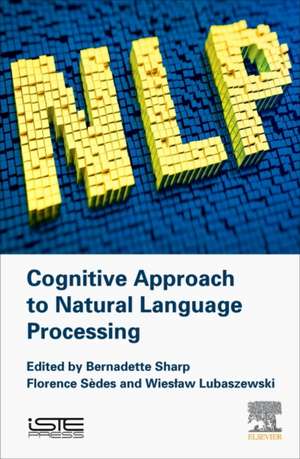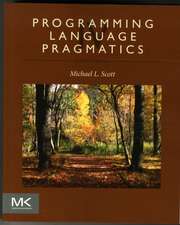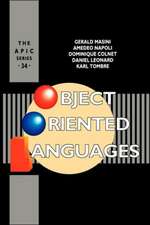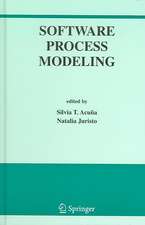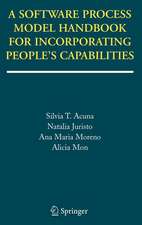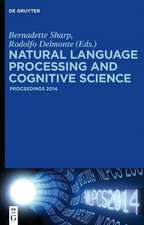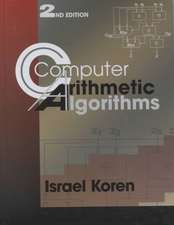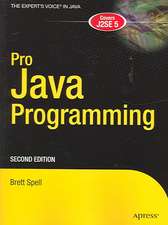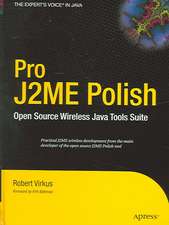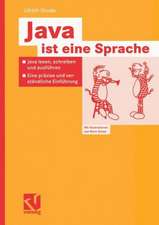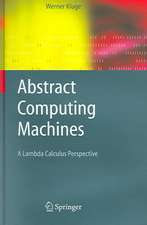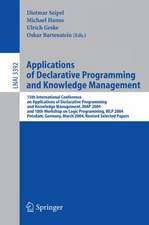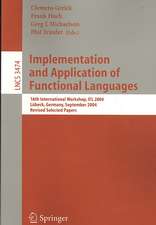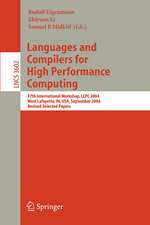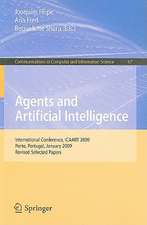Cognitive Approach to Natural Language Processing
Autor Bernadette Sharp, Florence Sedes, Wieslaw Lubaszewskien Limba Engleză Hardback – 23 mai 2017
- Discusses the problems and issues that researchers face, providing an opportunity for developers of NLP systems to learn from cognitive scientists, cognitive linguistics and neurolinguistics
- Provides a valuable opportunity to link the study of natural language processing to the understanding of the cognitive processes of the brain
Preț: 492.65 lei
Preț vechi: 732.02 lei
-33% Nou
Puncte Express: 739
Preț estimativ în valută:
94.27€ • 100.81$ • 78.60£
94.27€ • 100.81$ • 78.60£
Carte tipărită la comandă
Livrare economică 10-24 aprilie
Preluare comenzi: 021 569.72.76
Specificații
ISBN-13: 9781785482533
ISBN-10: 178548253X
Pagini: 234
Dimensiuni: 152 x 229 mm
Editura: ELSEVIER SCIENCE
ISBN-10: 178548253X
Pagini: 234
Dimensiuni: 152 x 229 mm
Editura: ELSEVIER SCIENCE
Public țintă
Researchers and postgraduate students, and Industrialists working in NLPCuprins
1. Delayed Interpretation, Shallow Processing and Constructions: the Basis of the “Interpret Whenever Possible Principle.
2. Can the Human Association Norm Evaluate Machine-Made Association Lists?
3. How a Word of a Text Selects the Related Words in a Human Association Network.
4. The Reverse Association Task.
5. Hidden Structure and Function in the Lexicon.
6. Transductive Learning Games for Word Sense Disambiguation.
7. Use Your Mind and Learn to Write: The Problem of Producing Coherent Text.
8. Stylistic Features Based on Sequential Rule Mining for Authorship Attribution.
9. A Parallel, Cognition-oriented Fundamental Frequency Estimation Algorithm.
10. Benchmarking n-grams, Topic Models and Recurrent Neural Networks by Cloze Completions, EEGs and Eye Movements.
2. Can the Human Association Norm Evaluate Machine-Made Association Lists?
3. How a Word of a Text Selects the Related Words in a Human Association Network.
4. The Reverse Association Task.
5. Hidden Structure and Function in the Lexicon.
6. Transductive Learning Games for Word Sense Disambiguation.
7. Use Your Mind and Learn to Write: The Problem of Producing Coherent Text.
8. Stylistic Features Based on Sequential Rule Mining for Authorship Attribution.
9. A Parallel, Cognition-oriented Fundamental Frequency Estimation Algorithm.
10. Benchmarking n-grams, Topic Models and Recurrent Neural Networks by Cloze Completions, EEGs and Eye Movements.
Recenzii
"All in all, for a computer scientist specializing in areas like computational linguistics, natural language processing, robotics, chatbots, navigation systems, speech recognition, and perhaps processing of sign languages, from an interdisciplinary point of view, this is an excellent starting point." --Computer Reviews
